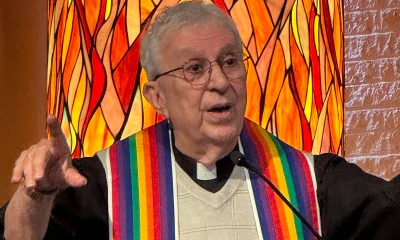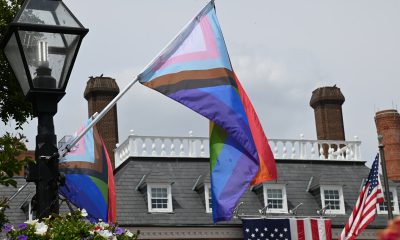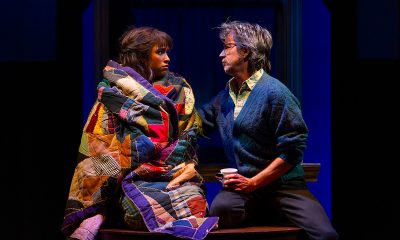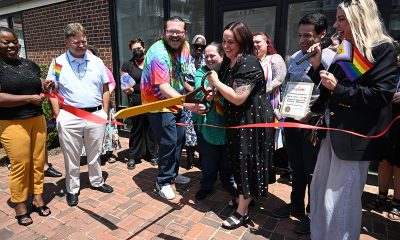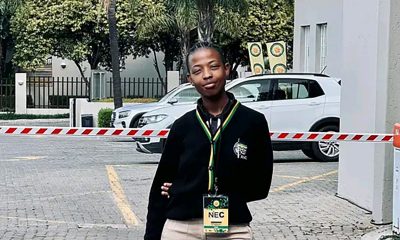Arts & Entertainment
Emily Saliers talks solo work in advance of Birchmere show
Longtime Indigo Girls’ singer/songwriter says time was right for groove-based album
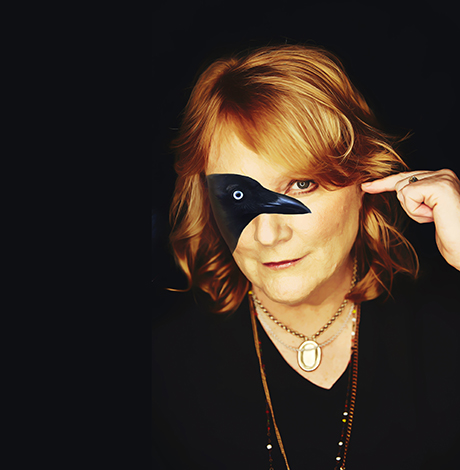
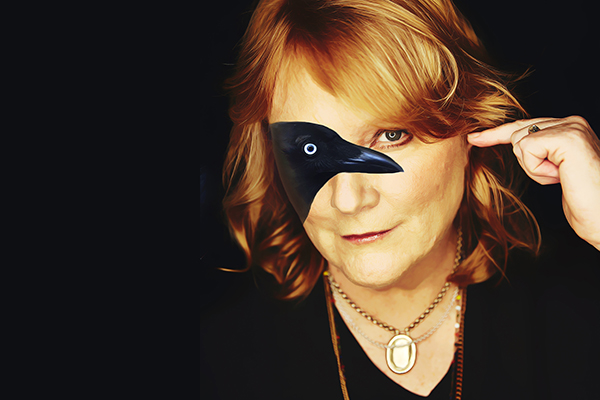
Emily Saliers is touring her debut solo album with a surprisingly elaborate band and stage show. (Photo by Jeremy Cowart)
Emily Saliers
‘Murmuration Nation Tour’
With Lucy Wainwright Roche
Wednesday, Oct. 11
The Birchmere
3701 Mount Vernon Ave.
Alexandria, Va.
$29.50
Thirty years and 14 studio albums into the Indigo Girls, Emily Saliers has released her first solo album, and even she acknowledges the artistic paradox.
“What’s a 53-year-old woman doing making her first solo record,” she says with a laugh. Although the Indigo Girls are alive and well — bandmate Amy Ray has released five solo albums and is working on a sixth — Saliers says it was a chance to pursue some of the more soul- and groove-oriented music she grew up with. “Murmuration Nation” came out in August. She’s touring it now and plays the Birchmere on Wednesday, Oct. 11. Her comments have been slightly edited for length.
WASHINGTON BLADE: How does it feel to finally have a solo album out?
EMILY SALIERS: Well, it’s great. I’ve been talking about it for a long time and even when I found (producer) Lyris Hung … it still took three years so it was like a real labor of love. … Sometimes you look at a CD and you think, “This is holding all that time and all that work and all that stuff,” and it’s a weird feeling but the response to the album so far has been overwhelmingly positive so I feel great about that.
BLADE: The Indigo Girls’ fan base is known to be highly loyal so is that a built-in audience for this or do you feel like you have to prove yourself somewhat?
SALIERS: I don’t have to prove myself. I just think the album is fairly different from anything Amy and I have done together in the same way that some of her records are very different from what we’ve done together. … I can’t just assume poeple will find out about it and get tickets to the show and stuff like that. … Without the Indigo Girls I wouldn’t have any solo record out … but still a lot of groundwork needs to get done to reach out and get people to listen to it.
BLADE: You talk about this being a more groove-oriented album. How hard is it to come up with a compelling groove or loop and which comes first — the music or the lyrics?
SALIERS: It’s not hard. … I could just pick up an Apple loop off my Logic program and just run that loop for five minutes and just start writing guitar parts to it and then a song gets born. A lot of the songs were written that way. They started with a loop or a beat and then that rhythmic pulse helped write the song. A few things that were written on guitar, Lyris said, “OK, we’re gonna take the guitar out of this and do this instead.” … I don’t sit down and go, “OK, I’m gonna write about guns in America right now.” I sit down and get a beat and find the chords and then the subject matter comes.
BLADE: Will you do some Indigo Girls songs on this tour too? You can’t really fill a whole show with just one album.
SALIERS: We’re gonna do mostly songs from the album. It’s a full band and a friend who’s a filmmaker has created some video images so it’s sort of a full sensory experience. A section of the show will probably be Indigo Girls songs that I’ve written, maybe acoustic, but we haven’t fully hammered that out yet. But the real purpose of the tour is to play the solo music.
BLADE: It feels like such a weird time in this country. You’ve been on the road some with Amy this year. Does it feel different at the shows or do people kinda wanna leave that at the door and just enjoy the concert?
SALIERS: It’s perceptibly different. From the first show we played after the election, it was palpable and there’s a real sense of anxiety among our fans but also a sense that we need music to galvanize us and to make us feel good. It’s a crazy fucking time in this country and not just a little — it’s a lot. It almost feels cosmic with the terrible storms, the earthquakes. We’ve been getting huge reactions to songs like “Pendulum Swinger” and “Rise of the Black Messiah.” … This country — it’s a bit of a tinderbox right now
BLADE: How much of your album was written by November?
SALIERS: All but one song. “Fly” was written in response to the election.
BLADE: When people yell out songs during the slightest lull in a concert, do you ever feel like saying, “Just chill — we have a set list?”
SALIERS: No. We try to honor as many of those as we can. We’ll look at the set list immediately and ascertain if there’s a spot where that song makes sense. Some we won’t do if they’re too rusty and we haven’t practiced them and sometimes we won’t do it if it’s something we’re tired of. Sometimes if we’re introducing something from our new album and somebody yells out, “Chickenman!,” we’ll say, “We’re gonna go ahead and do the one we were talking about.”
BLADE: The Indigo Girls were in our market in May for three shows with the NSO Pops. How did your symphonic shows come about and how were those dates?
SALIERS: D.C. was fantastic but after the third show, we were wiped because the symphony shows are the most intensive of all our performances. They’re one-offs, not typically tied to a tour, so we show up, meet the conductor, have a two-hour rehearsal and then we perform. You have to constantly be on your toes and it’s a different orchestra every time. The D.C. orchestra was phenomenal as you would expect. It got started because there’s an agency that puts artists together to arrange your songs and then you send the scores around and we got invited to do that and it’s been fantastic. … We’re doing a symphony album in 2018 that we recorded with the Colorado University Symphony so it’s become a very important part of what we do.
BLADE: Sometimes those arrangements for pop or rock acts are so lame and the orchestra is bored out of their minds. How do you feel yours turned out and was that a concern?
SALIERS: We worked with two different arrangers and then ended up sticking with this guy named Sean O’Laughlin and he’s just so creative and passionate. Amy and I both had long conversations with him about how he felt about the songs. … He put so much into them. … Often the conductor will say, “These are good arrangements, they’re interesting.” … We hired the right person.
BLADE: How many Indigo Girls songs do you have charts for now?
SALIERS: I think maybe 23. We usually do about 18 at one of those shows.
BLADE: The Indigo Girls have stayed fairly active in the studio while many other veteran acts just tour with nothing new out. Why is that important to you?
SALIERS: Yeah, I mean it’s true they’re expensive to make and nobody sells records anymore, even the type of top echelon of record-selling bands don’t really sell. We have to make a living touring, that’s just a reality, so it’s a good thing we love it and we never go out for too long. … We’re always excited to get back together and there’s always an internal push to create more new music. The only thing that keeps us from doing it more is busyness. … It just makes sense in the scope of a career to keep putting out new music.
BLADE: Do you think it’s lame with bands like the Dixie Chicks who just tour and tour and haven’t had anything new out in like 10 years?
SALIERS: Whatever anybody wants to do is fine. If people like it and they’re coming to your shows, I don’t really care. It’s just that for us, we know what keeps our fires burning and that is to create new music, to not be on the road all the time and to support each other’s independent projects. But whatever other bands want to do, I don’t have any judgement.
BLADE: How is your daughter?
SALIERS: She’s gonna be 5 at the end of November and she’s the light of my life. I never wanted to be a parent ’til I found the right person and it’s been a very happy marriage. We allow each other a lot of space and (wife) Tristin takes care of things when I go away and I take care of things when she’s involved in school or work. We love our kid and we have a really, really great life and I’m so grateful for it.
BLADE: You and Amy were so pioneering and were out when so few were in popular music. Have you ever had younger bands like maybe Tegan and Sara or whomever, tell you it was cool or inspiring that y’all were out so early?
SALIERS: I don’t recall that so much from other artists but we’ve had a lot of those conversations with fans. They’ll tell us personal stories about how the music carried them through a hard time when they were coming out or whatever and that’s really the most gratifying thing.
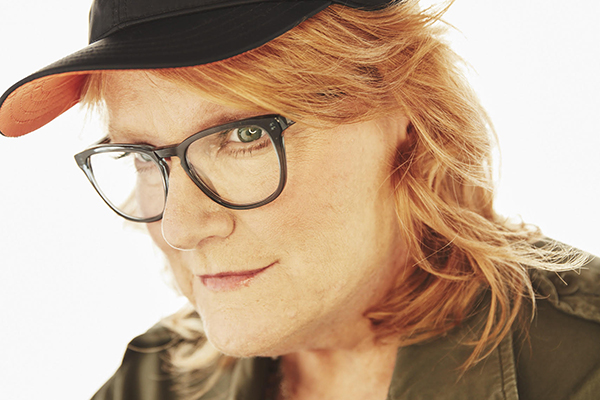
Photos
PHOTOS: Independence Day Weekend in Rehoboth
Wicked Green Pool Party, fireworks among festivities
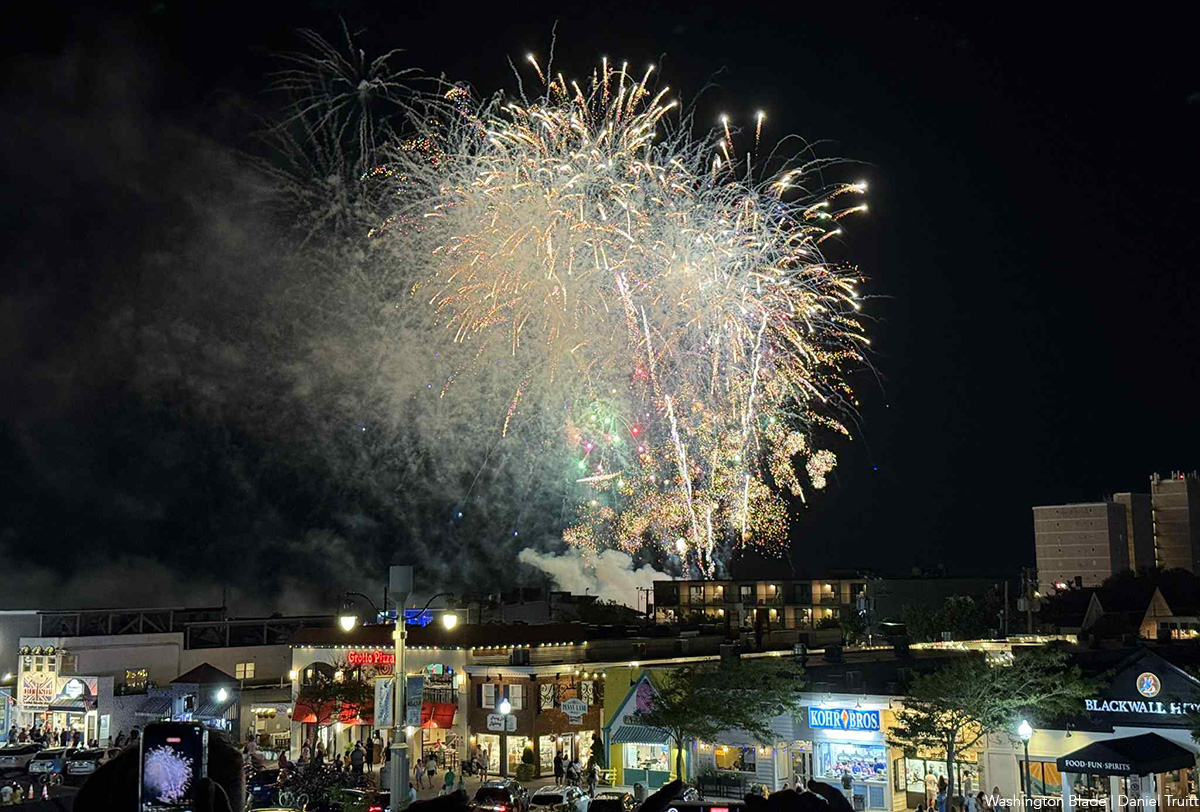
Vacationers and residents alike enjoyed Independence Day Weekend activities in Rehoboth Beach, Del. The Wicked Green Pool Party drew hundreds to the CAMP Rehoboth fundraiser on Saturday. That evening, revelers went to the rooftops to watch the fireworks display.
(Washington Blade photos by Daniel Truitt)
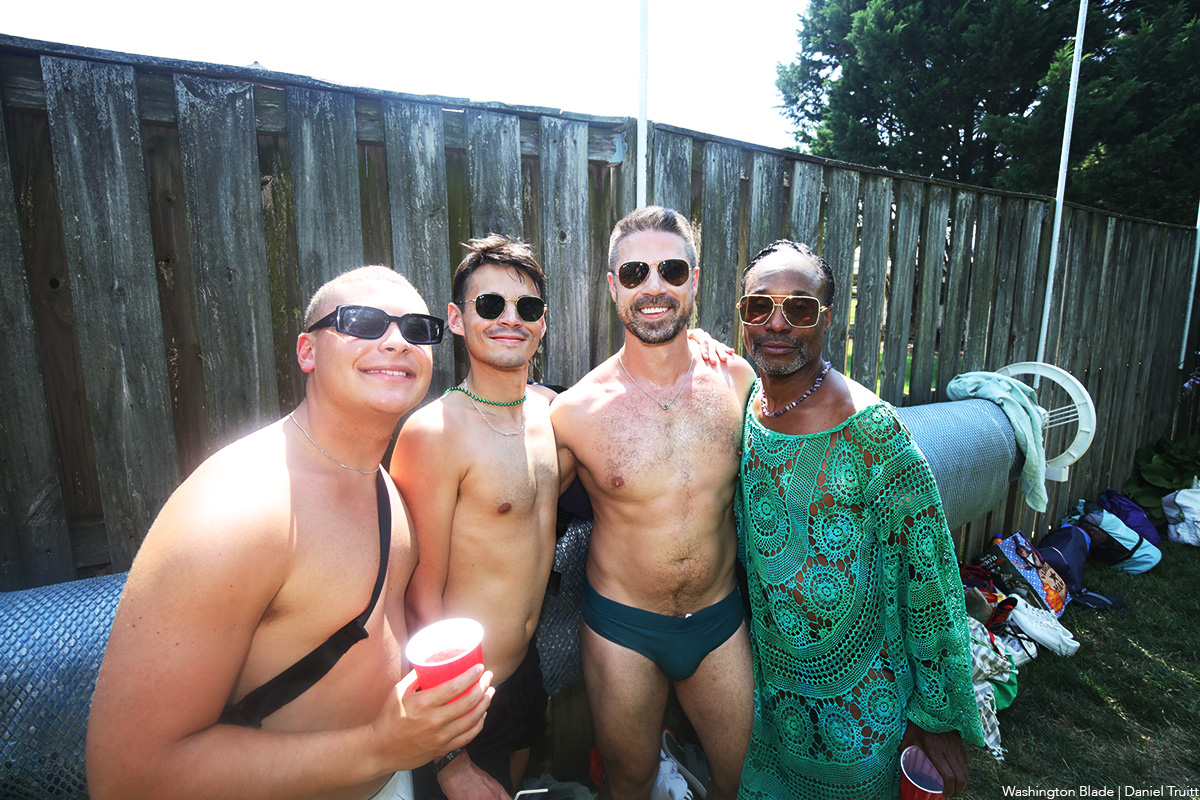

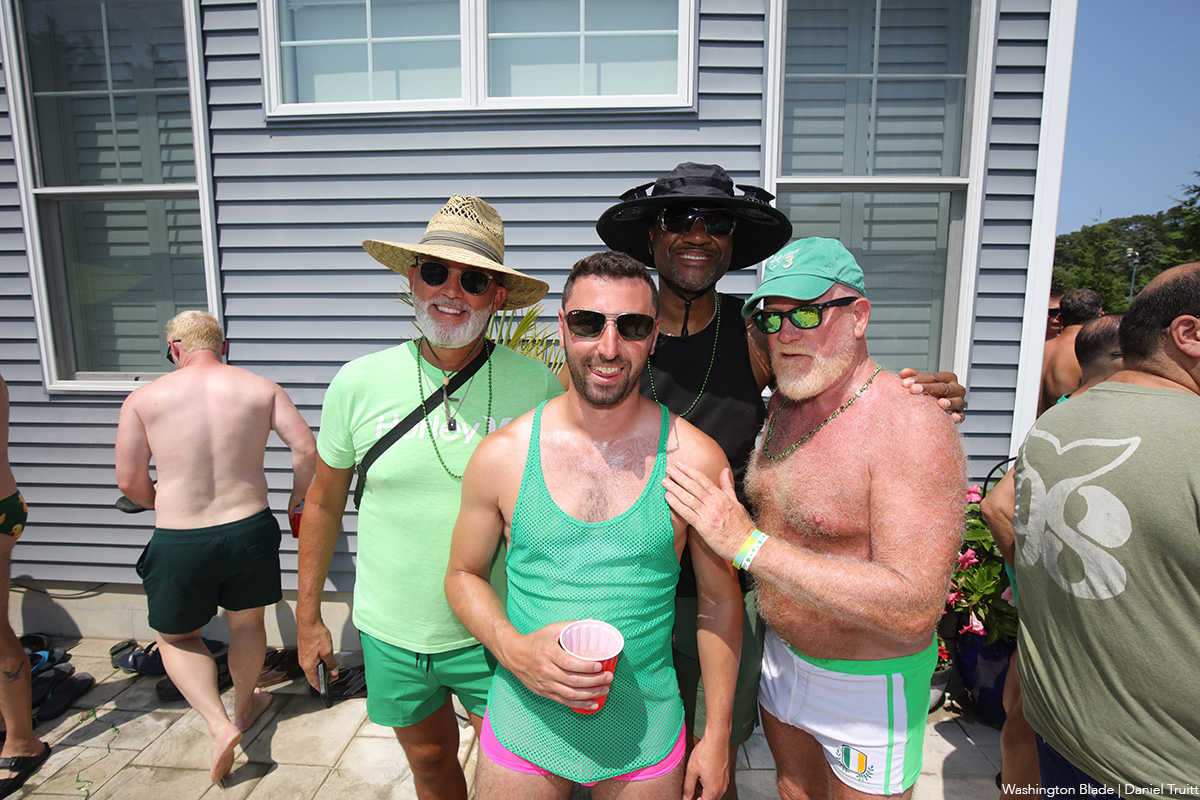
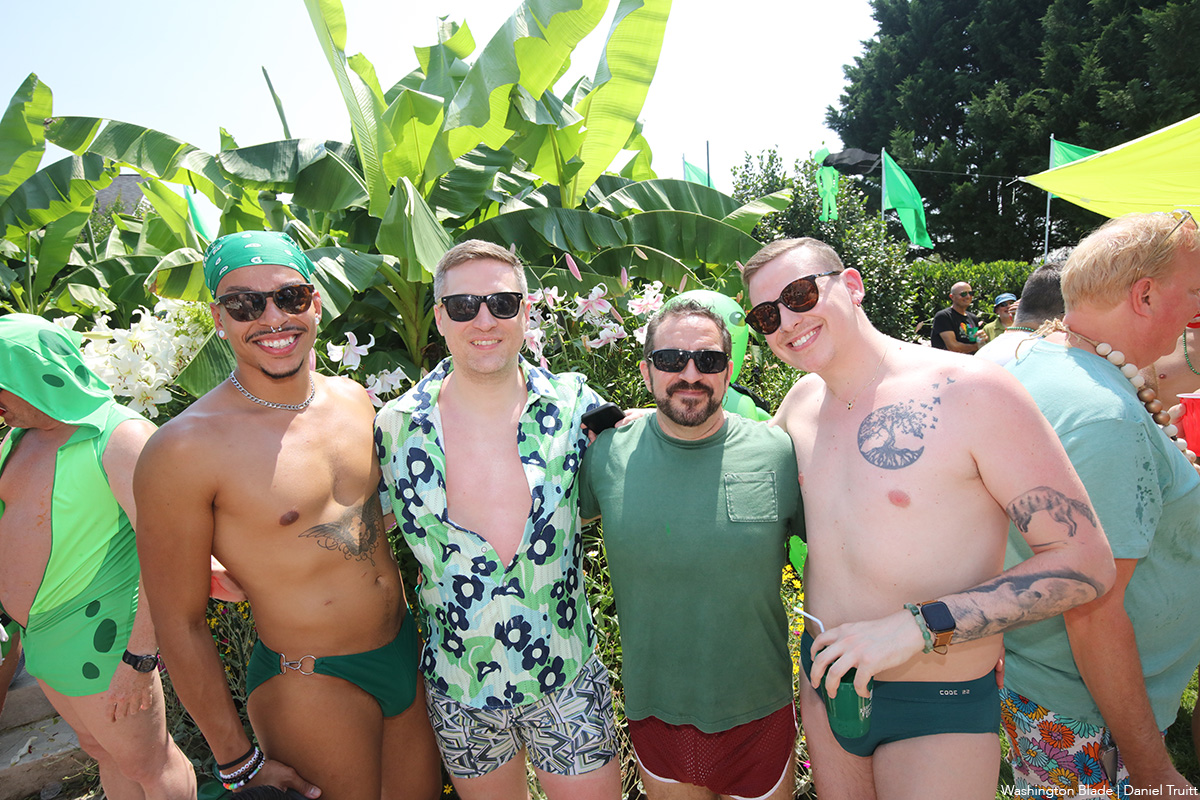
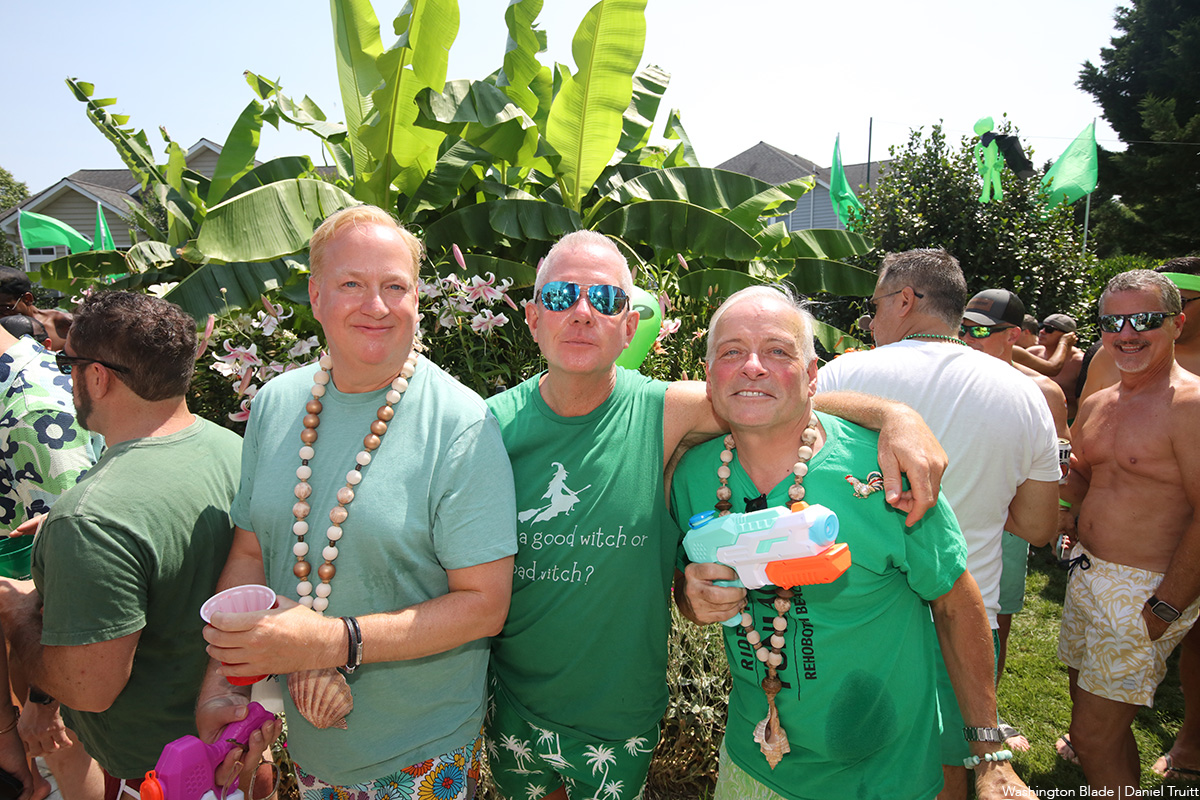
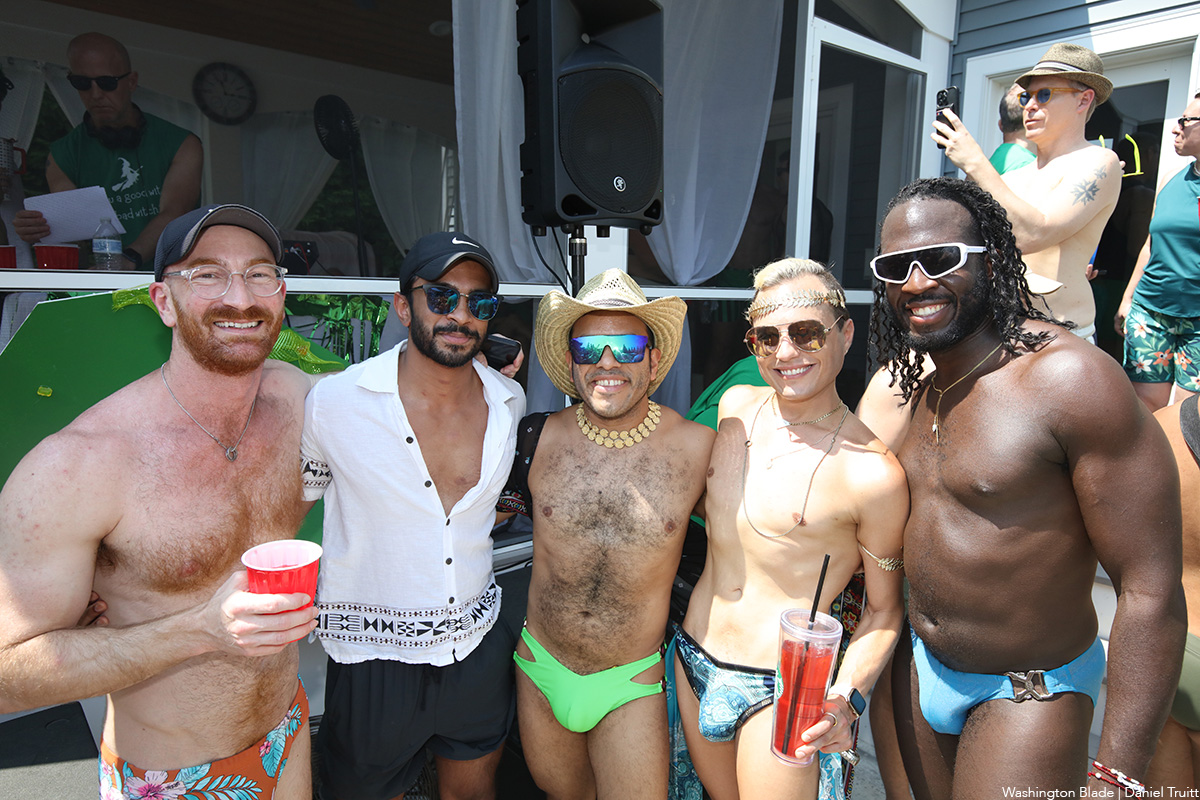
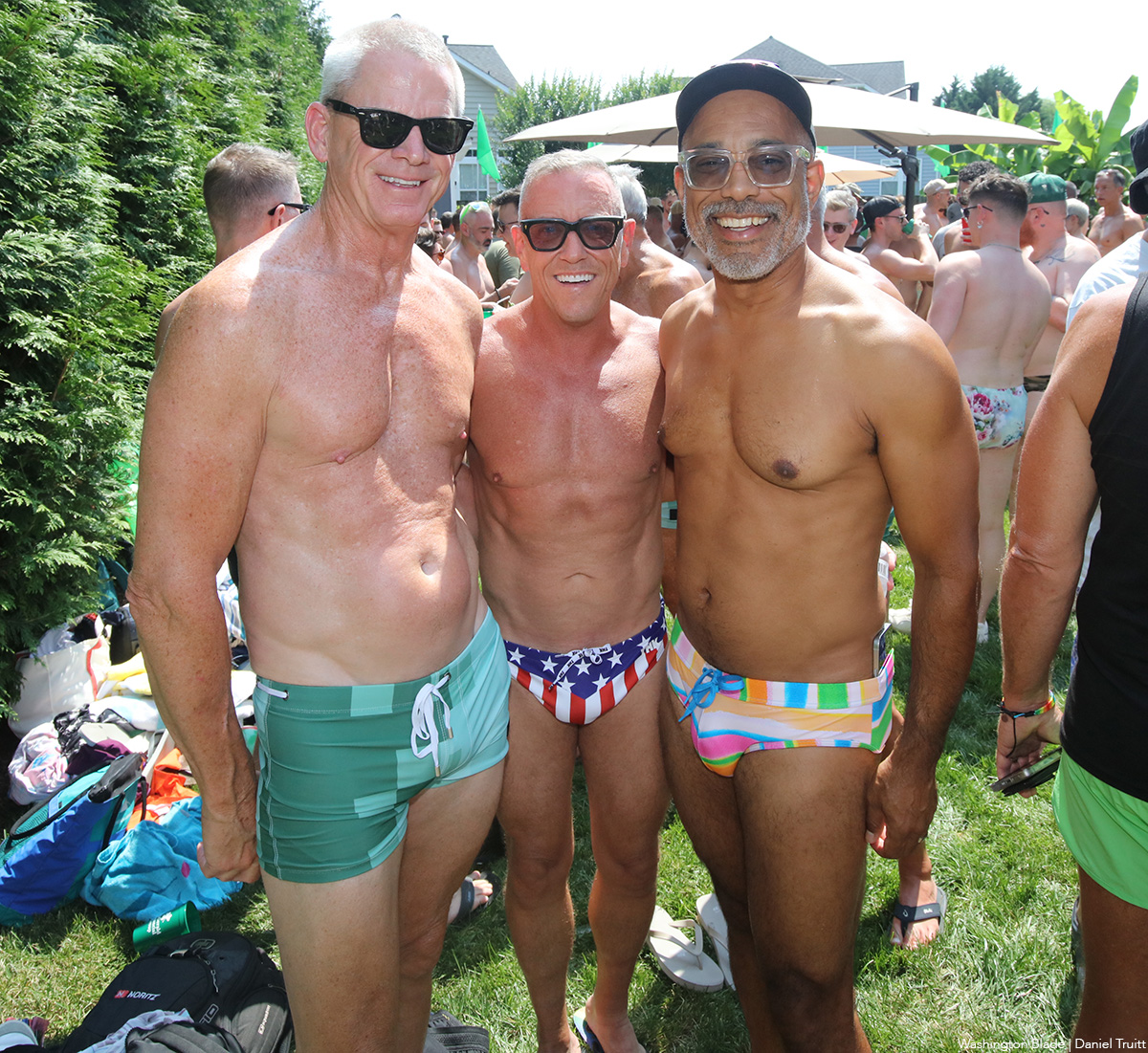
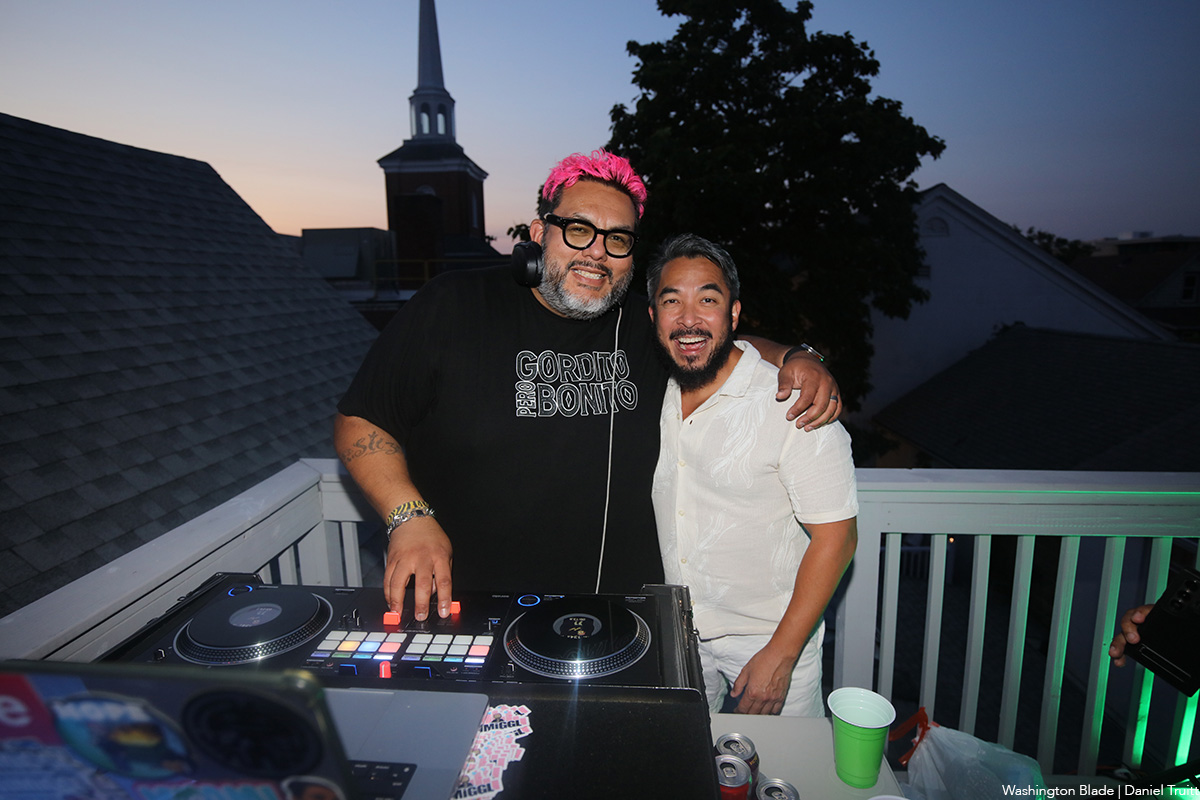

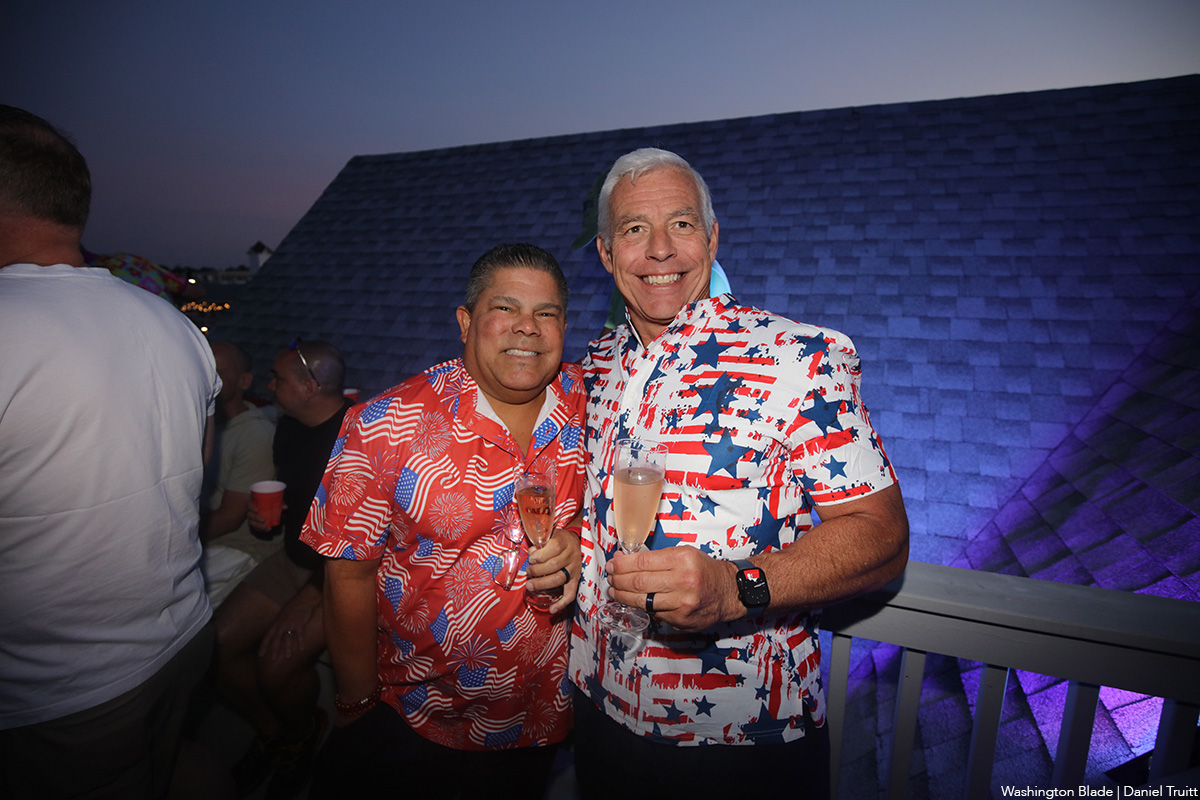
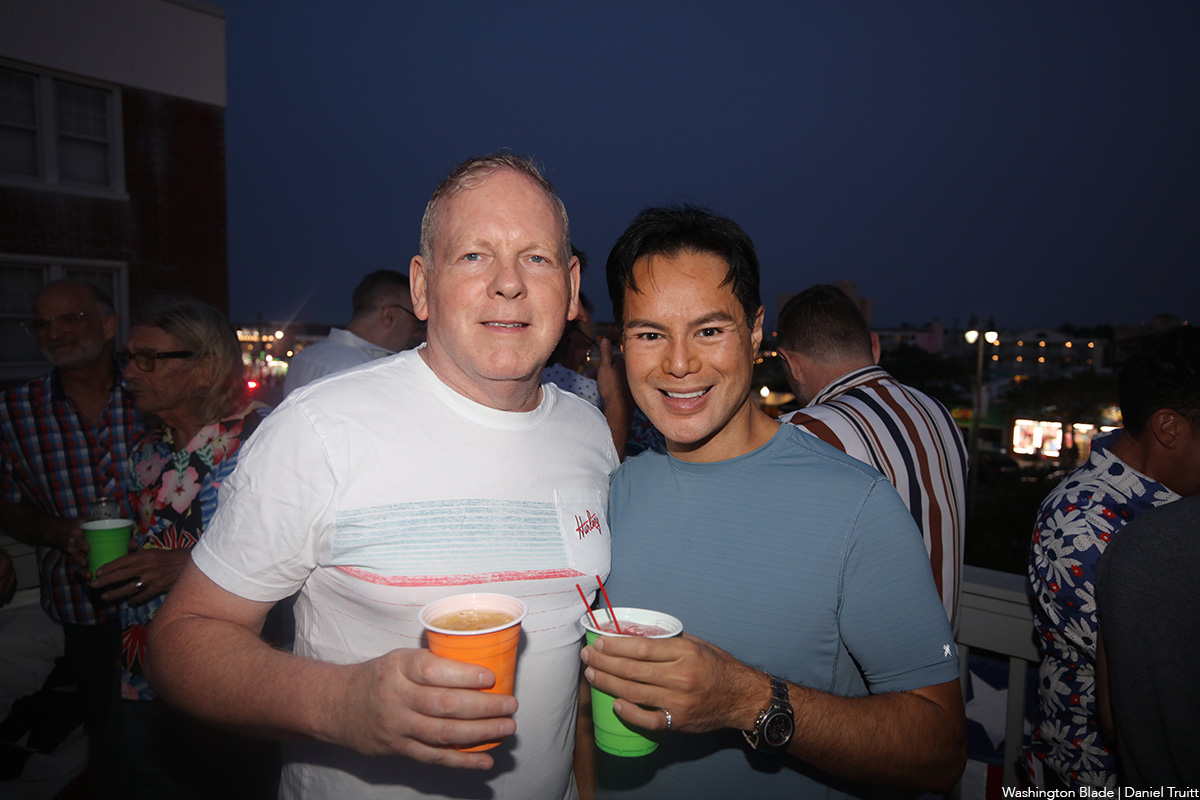
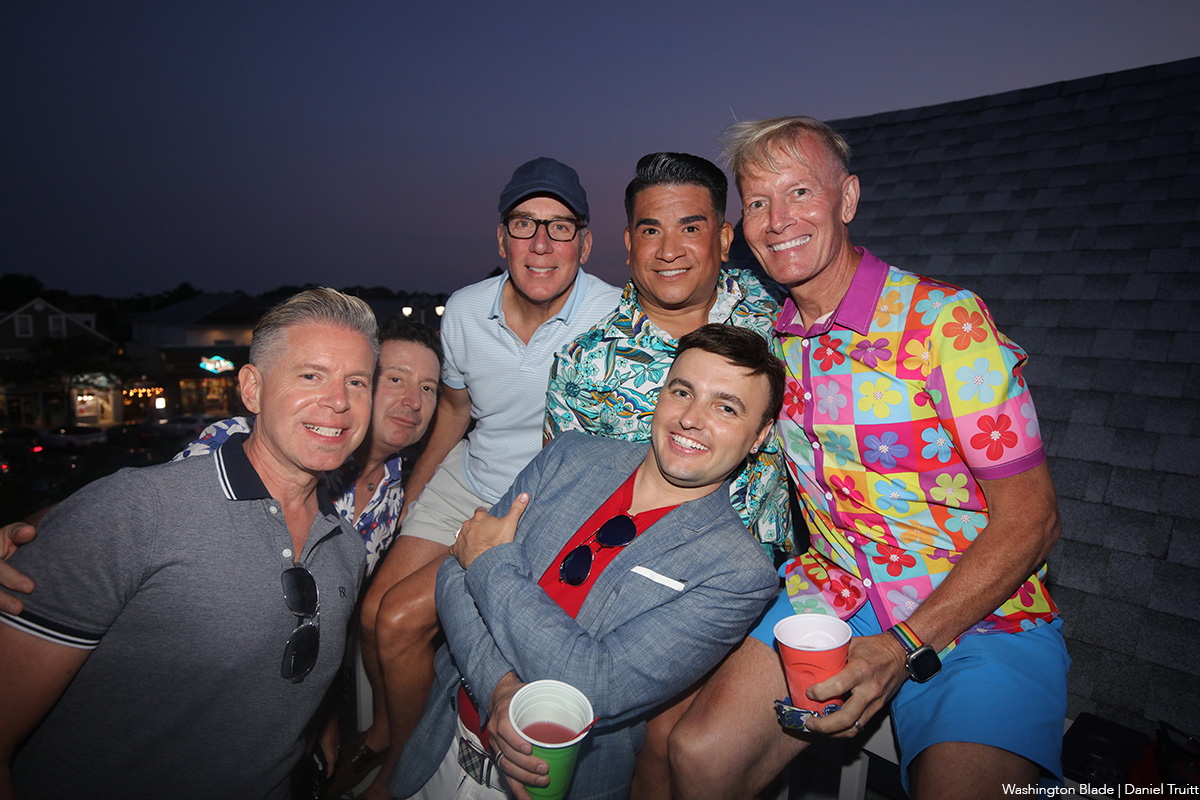
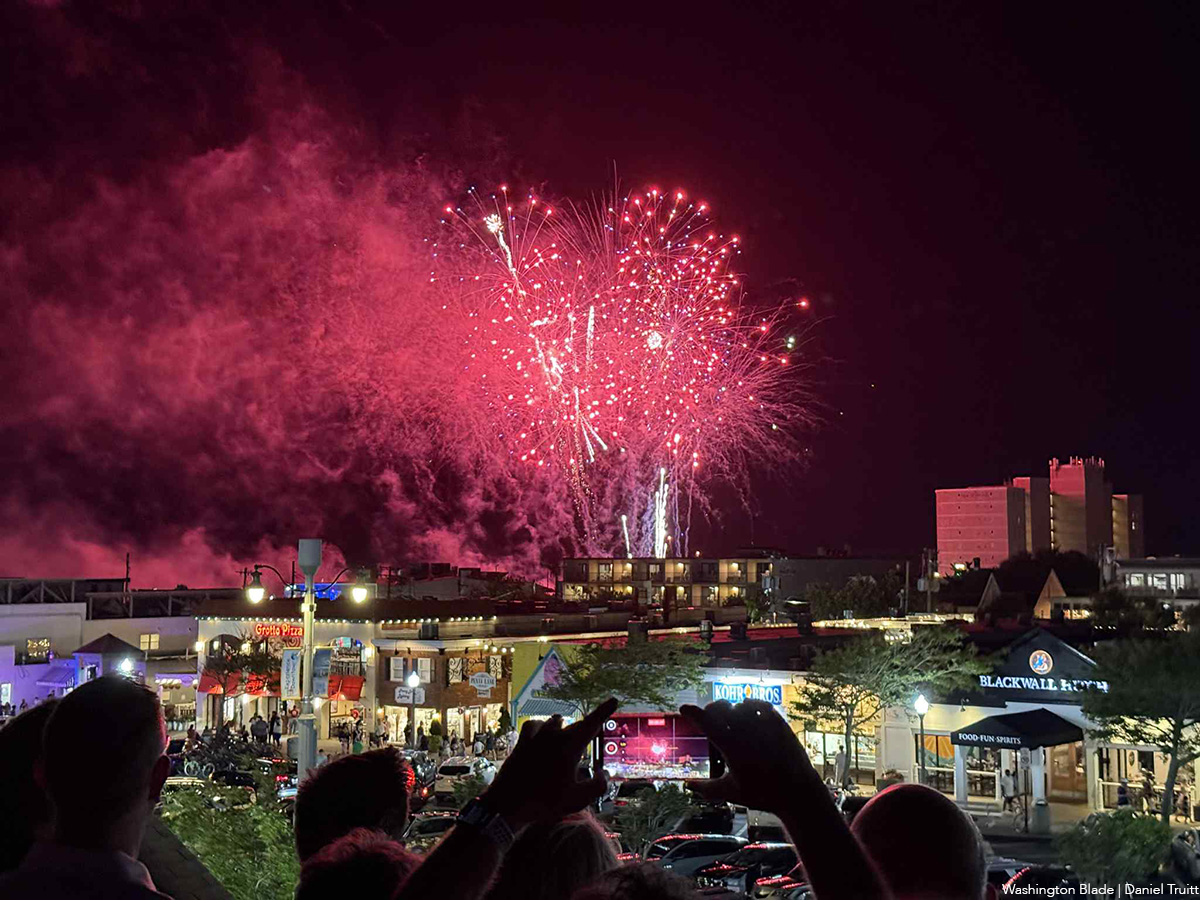
Music & Concerts
Red, White, and Beyoncé: Queen Bey takes Cowboy Carter to D.C. for the Fourth of July
The legendary music icon performed on July 4 and 7 to a nearly sold-out Northwest Stadium.
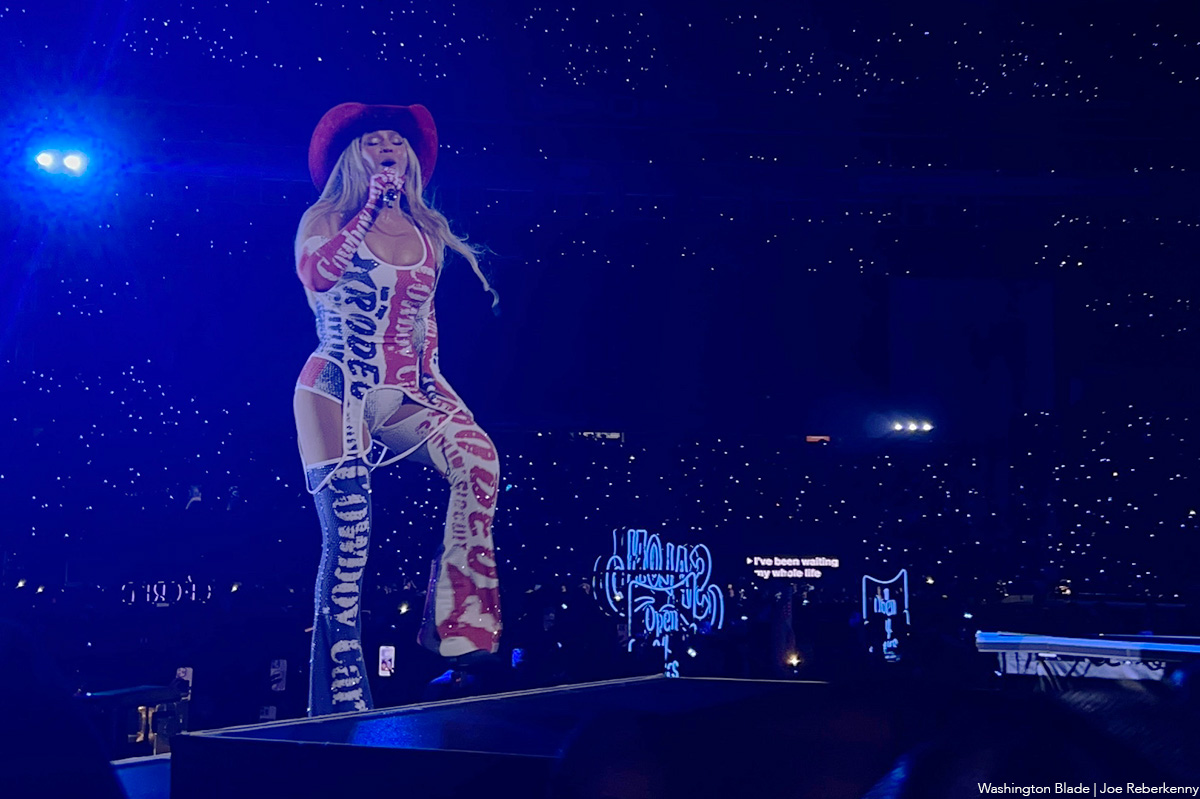
Just in time for Independence Day, Beyoncé lit up Landover’s Commanders Field (formerly FedEx Field) with fireworks and fiery patriotism, bringing her deeply moving and genre-defying “Cowboy Carter” tour to the Washington, D.C. area.
The tour, which takes the global icon across nine cities in support of her chart-topping and Grammy-winning country album “Cowboy Carter,” landed in Prince George’s County, Maryland, over the Fourth of July weekend. From the moment Beyoncé stepped on stage, it was clear this was more than just a concert — it was a reclamation.
Drawing from classic Americana, sharp political commentary, and a reimagined vision of country music, the show served as a powerful reminder of how Black Americans — especially Black women — have long been overlooked in spaces they helped create. “Cowboy Carter” released in March 2024, is the second act in Beyoncé’s genre-traversing trilogy. With it, she became the first Black woman to win a Grammy for Best Country Album and also took home the coveted Album of the Year.
The record examines the Black American experience through the lens of country music, grappling with the tension between the mythology of the American Dream and the lived realities of those historically excluded from it. That theme comes alive in the show’s opening number, “American Requiem,” where Beyoncé sings:
“Said I wouldn’t saddle up, but
If that ain’t country, tell me, what is?
Plant my bare feet on solid ground for years
They don’t, don’t know how hard I had to fight for this
When I sing my song…”
Throughout the performance, Beyoncé incorporated arresting visuals: Black cowboys on horseback, vintage American iconography, and Fox News clips criticizing her genre shift — all woven together with voiceovers from country legends like Dolly Parton and Willie Nelson. The result was a multimedia masterclass in storytelling and subversion.
The “Cowboy Carter” tour has been a social media sensation for weeks, with fans scrambling for tickets, curating elaborate “cowboy couture” outfits, and tailgating under the summer sun. At Commanders Field, thousands waited in long lines for exclusive merch and even longer ones to enter the stadium — a pilgrimage that, for many, felt more like attending church than a concert.
One group out in full force for the concert was Black queer men — some rocking “denim on denim on denim on denim,” while others opted for more polished Cowboy Couture looks. The celebration of Black identity within Americana was ever-present, making the concert feel like the world’s biggest gay country-western club.
A standout moment of the night was the appearance of Beyoncé’s 13-year-old daughter, Blue Ivy Carter. Commanding the stage with poise and power, she matched the intensity and choreography of her mother and the professional dancers — a remarkable feat for someone her age and a clear sign that the Carter legacy continues to shine.
It’s been nearly two decades since Beyoncé and Destiny’s Child parted ways, and since then, she’s more than lived up to her title as the voice of a generation. With “Cowboy Carter,” she’s not just making music — she’s rewriting history and reclaiming the space Black artists have always deserved in the country canon.
a&e features
From Prohibition to Pride: Queering the District podcast reveals local LGBTQ history
The new podcast explores the hidden history and enduring impact of queer spaces in Washington, D.C.
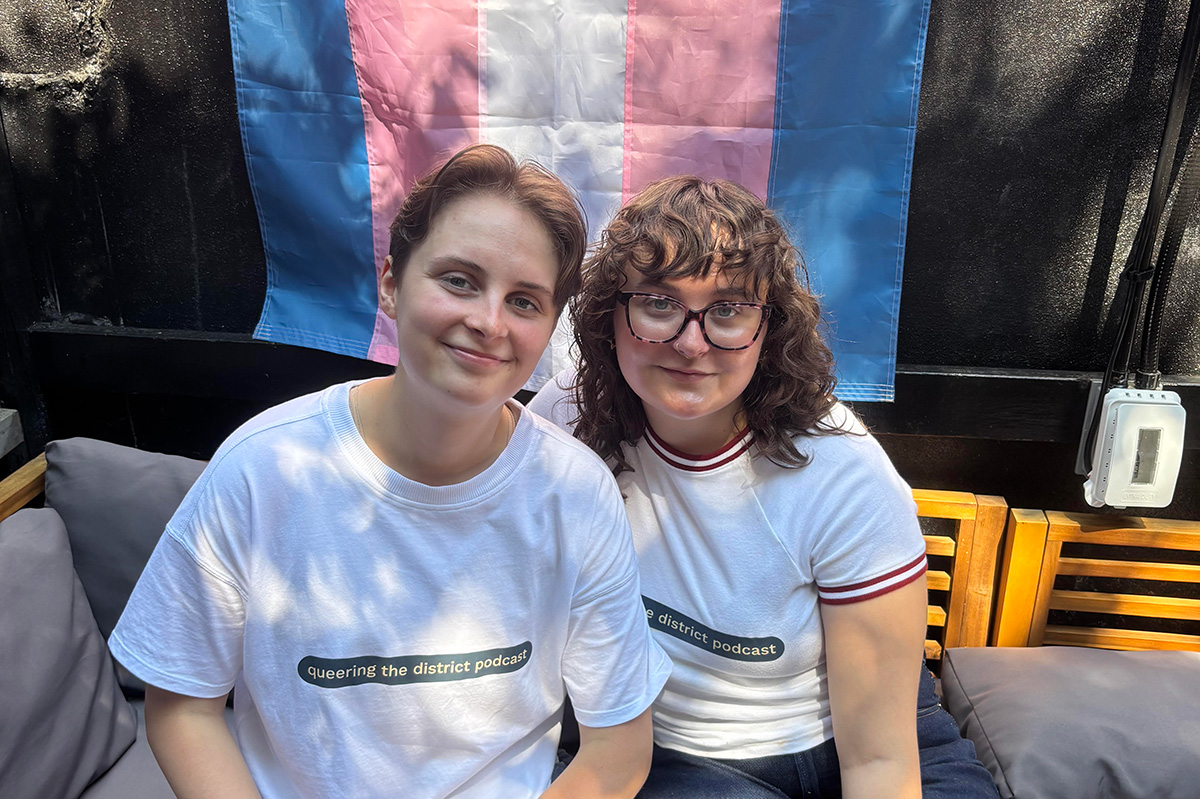
On June 25, as Pride month inched toward its end, three queer creators launched an ambitious project to honor the spaces that built D.C.’s LGBTQ community—and connect them to today’s queer life. The first episode of their podcast, Queering the District, hit streaming platforms that day, aiming to spotlight what host and co-creator Abby Stuckrath calls “third places”: bars, clubs, and gathering spots that have served as hubs for queer life across the city.
Each episode of the 10-part series delves into a different piece of D.C.’s queer past—from landmark clubs to untold personal stories—told through the voices of drag legends, activists, DJs, historians, and patrons who lived it. The show also threads together personal experiences from today’s community, bringing the listener on an auditory journey from Prohibition-era speakeasies to contemporary nights out at places like As You Are or Saints & Sinners.
Abby Stuckrath, alongside her sibling Ellie Stuckrath, and producer Mads Reagan, make up the podcast’s creative team. A recent journalism graduate of American University, Abby told the Blade that her passion for queer storytelling began during college—and that D.C. itself played a defining role in shaping her queer identity.
“I went to American University. I graduated last year and studied journalism. When I was in school, I always wanted to focus on queer stories – especially in D.C., because I’m from Denver, Colorado, I’ve never lived in a place like this before. D.C. has always just kind of been a place I call home when it comes to my queer identity.”
But breaking into the media to tell those stories wasn’t easy. Stuckrath quickly learned that editorial support—and funding—for queer-focused projects is limited. So she decided to do it her own way.
“I kind of found out that if you want to tell stories, you kind of have to do it on your own– especially when it comes to queer stories. There’s not a lot of people begging for us to talk about queer people and to pay you for it. So I was like, ‘Okay, let’s just do it on my own.’”
The idea for the podcast first took root in conversations with Ellie, Abby’s sibling and biggest supporter. Ellie had also moved to D.C. to find more space to explore and express their queer and gender identities. Together, the two began shaping a vision that would combine storytelling, sound design, and grassroots community input.
“I was like, ‘I don’t know what exactly I want to do yet, but I want it to be queer, and I want it to be about D.C., and it’s going to be called Queering the District, and we’re going to find out what that means.’ And Ellie is my biggest supporter, and my best friend. And they were like, ‘Hell yeah. Like, let’s do this.’ And so we decided to just do it together.”
The name stuck—and so did the mission. The team began researching queer D.C. history and found a city overflowing with stories that had rarely been documented, especially in mainstream archives.
“We started looking up the history of queer culture in D.C., and it kind of just clicked from there,” Stuckrath said. “I did not know anything about how rich our history is in the city until one Google search, and then I just kept learning more and more. I was kind of pissed because I studied gender studies in school in D.C. and didn’t learn shit about this.”
Season one focuses on the role of third places—non-work, non-home spaces where queer people could gather, exist fully, and build community.
“Third places have always been the epicenter of queer life… places outside of just your own personal home, because sometimes that isn’t a safe place. And of course, the work most commonly in the past and still today, isn’t a safe place for queer people to be full of themselves. So like, bars were the first place for queer people to really thrive and meet each other.”
To make the show participatory, Queering the District includes a twist: a voicemail line where anyone can call in and share a memory or question. The team calls the phone “Fifi”—a nod to the kind of retro guestbooks often used at weddings, but reimagined for queer nightlife and history.
“We wanted to find a way for people to share their stories with us anonymously… so even though we start in Prohibition, we wanted to connect it to now—like, those people who were singing jazz to each other in a white queer bar are connected to you singing karaoke on a Sunday night at your favorite gay bar. We’re all interconnected by this third place of queer bars in D.C.”
Those connections are emotional as well as historical. While building the series, one realization hit Stuckrath particularly hard: the immense loss of queer spaces in D.C., especially in neighborhoods that have since been heavily redeveloped.
“Every time I go to a Nats game, I think about, well, this just replaced five gay bars that used to be here. It used to be the home of Ziegfeld’s… Tracks, which was almost 2,000 square feet, with a volleyball court in the back, a fire pit, and iconic light show. I just didn’t know that we had that, and it made me sad for the queer elders that are in our city now who walk the streets and don’t see all those places they used to call home.”
That sense of loss—alongside the joy and resilience of queer community—is what the show aims to capture. As the podcast continues, Abby hopes it serves as both a celebration and an educational tool, especially for young LGBTQ people arriving in D.C. without realizing the queer foundations they’re walking on.
“D.C. is a unique city, and specifically young queer people who are hoping to move to the city—to know that you’ve got to know your history to be here. I hope this serves as an easier way for you to consume and learn about queer history, because queer history defines how we move in life.”
And for all the voices still left out, Abby is clear: this podcast is an open door, not a final word.
“This is a perfectly imperfect podcast. We should just be a starting point. We shouldn’t be the ending point.”
New episodes of Queering the District drop every Wednesday on all major platforms.



